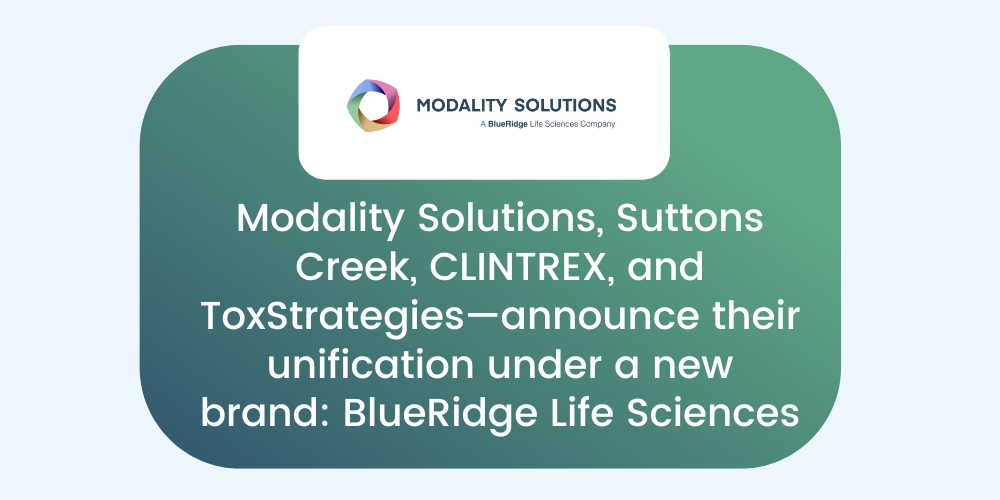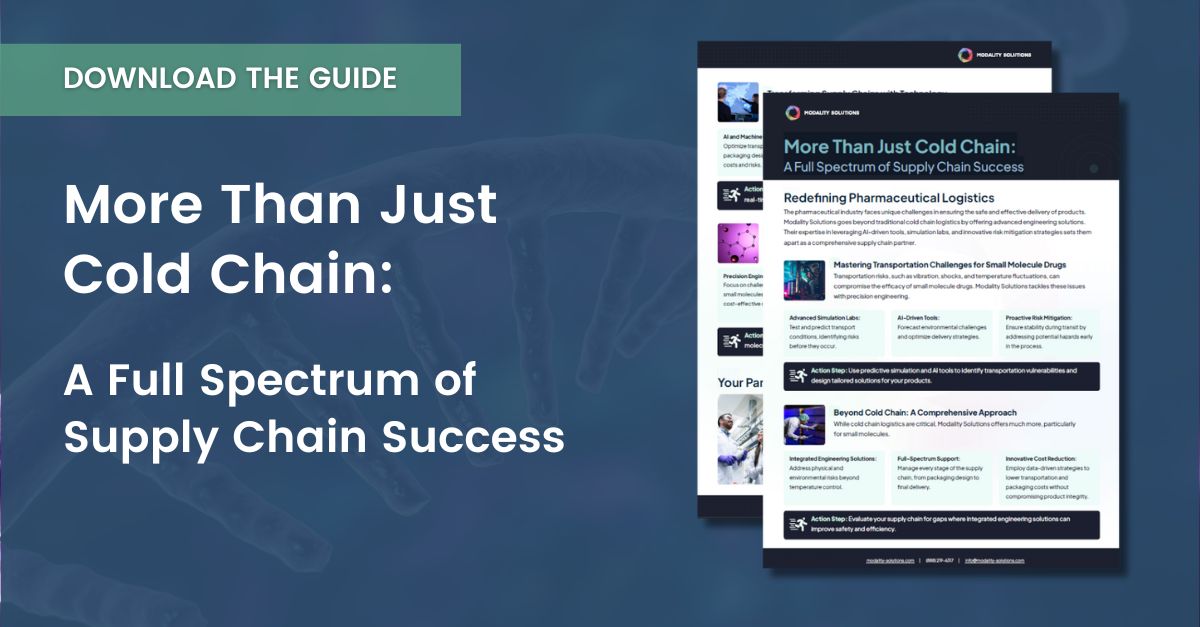Unlocking FDA Insights: Exploring Open Data Files for Shipping Validation
Are you aware of the open data files published online by the FDA? This wealth of information includes redacted versions of CMC reviews, meeting minutes, Summary Basis for Regulatory Action letters, Complete Response Letters, and Post-Marketing Commitments for approved therapies. Fortunately, we are taking the time to comb through these files to find specific agency feedback on topics that may impact and guide your approach to shipping validation.
This first discussion will focus on the demonstration that a biologic’s critical quality attributes (CQAs) are not impacted by shipping operations.
Product Quality and the Impact of Shipping
The FDA requires information on your supply chain and shipping to be submitted with your Biologics License Application (BLA). Details required in Section 3.2.S.2.4 include shipping and storage conditions and information on the processes used to transfer material between nodes in the supply chain. Shipping validation is included in 3.2.P.3.5 under the Process Validation and Evaluation Studies for the manufacture of the drug product (DP).
There is no direct guidance from the FDA stating their expectations for shipping validation within a BLA. From direct experience as well as this data review, the agency has two distinct expectations that must be demonstrated:
- Product temperatures will be maintained within specification during shipping, and
- Shipping operations do not adversely impact product quality/safety/efficacy.
This article will focus on the second expectation around product quality and the impact of shipping. First and foremost, a sponsor must have sufficient data to understand the impact of temperature on their therapy. While standard stability data is sufficient for static conditions such as storage specifications and shelf life, for shipping:
“It is not appropriate to leverage stability data to support the allowable shipping temperature range of (redacted), because DP is subjected to additional stresses during shipping, which could potentially impact product stability.” [1]
“. . . the Agency does not agree that stability data can be leveraged to support temperature excursion during real-time shipping because the drug product is exposed to different stresses that could impact product quality.” [2]
These communications are both sourced from a Complete Response Letter (CRL) where the agency makes its stance clear: data beyond stability studies is needed to clear temperature excursions during shipping. Therefore, shipping studies that include temperature challenges are required to release products exposed to temperature excursions during shipping operations. Furthermore:
“Your shipping validation studies for (redacted) should include an assessment of product quality before and after shipment, and be performed with product that is representative of the commercial manufacturing process, formulation, and container closure. Include in your original BLA submission results from shipping validation studies performed to support the physico-chemical stability of (redacted). These studies should assess the impact of worst-case shipping conditions and potential temperature excursions on the critical quality attributes of the product, and represent the spectrum of allowed packing arrangements of product within any secondary/tertiary packaging also.” [3]
In these meeting minutes, the agency provides some further clarity of what they would like demonstrated by these studies and what factors need to be included. Of particular importance are their inclusion of worst-case shipping conditions including worst-case with respect to packaging configurations. In this manner, you must ensure to either test all configurations, or have suitable justification of a worst-case presentation for your product. For example, Modality recommends testing in the bulk configuration for vial presentations, as the final packaging typically provides more cushioning to the product. Additionally, the impact of temperature excursions must also be considered alongside shipping, meaning that studies only taking place within the allowable temperature range are also insufficient.
Considerations for Methodology
Review of additional FDA data files start to highlight the agency’s expectations for acceptable methodology of a study.
“The mechanical performance studies, which include an independent evaluation of vibration and physical shock, are not sufficiently representative of potential stresses induced during routine distribution conditions, where additional factors may contribute stress (e.g., temperature and pressure changes) and multiple stresses could occur concurrently. Therefore, these studies cannot on their own be used in lieu of performing real-time DP shipping validation studies” [1]
“It may be possible to leverage data from the mechanical performance studies, if testing was performed outside of the intended shipping temperature of 2-8°C, if the mechanical performance study is sufficiently representative of real-time shipping conditions and the appropriate product quality attributes are tested” [2]
“The air transport simulation study parameters tested are not representative of routine distribution conditions and cannot on their own be used in lieu of performing real-time DP shipping validation studies. In addition, it is unclear how the supply chain cycling study can be used to support the validation of shipping of the drug product. . . Provide shipping validation data for the drug product from real-time shipping studies or from studies that are sufficiently representative of the commercial shipping conditions.” [4]
“We remind you of your post marketing commitments: To perform a simulated shipping validation study representing real world shipping conditions, such as temperature, mode of transport, shipping duration, and packaging configuration using (redacted) drug product representative of commercial drug product to confirm that product quality is maintained.” [5]
Through these four direct quotes, the FDA clarifies that shipping studies must examine concurrent shipping hazards instead of sequential ones. This statement rules out using standard packaging test methodologies such as ASTM D4169. Additionally, the studies must represent real-time shipping, meaning that exposure to factors such as vibration must be comparable to their real-time duration during actual shipments. Finally, the agency states that these studies must include an examination of temperature to adequately stress the drug product during the study.
Adherence to all of these factors is best guaranteed through the use of a transport simulation study. Modality Solutions has developed our transport simulation methodology to concurrently simulate shipping hazards at worst-case realistic levels, and durations representative of real-time shipping. In fact, transport simulation is the only methodology that can examine temperature excursions simultaneously with shipping hazards in a manner sufficient to the agency.
Critically, none of these statements require that this demonstration of product quality occur using real-world shipments. All four of these quotations allow for the use of a simulated study so long as there is adequate justification for its representation of actual shipping. In fact, Modality Solutions has demonstrated the advantages of completing this requirement through simulated lab studies rather than using real-world shipments.
Furthermore, published letters show this same methodology accepted for cell therapies, indicating the agency’s need for this data even when shipping at cryogenic conditions [6]. Similar language can also be found in publicized Assessment Reports from the European Medicines Agency (EMA), demonstrating that similar data is required when commercializing outside of the US [8].
Open data files from the FDA paint a clear picture: you must have strong data in a BLA demonstrating that the CQAs of your DP are not impacted during shipping operations. The agency expects the data to be representative of commercial shipping and to be an examination of concurrent shipping hazards. Most importantly, you must also examine temperature excursions as stability data alone is not sufficient to justify excursions during shipping. At Modality Solutions, we have the regulatory experience and technical know-how to design a transport simulation study that meets these expectations and streamlines your next commercial filing submission.
References
[1] Pfizer Complete Response Letter for Trazimera (PF-05280014), April 2018
[2] Pfizer and FDA Meeting Minutes for Trazimera (PF-05280014), June 2018
[3] Tesaro pre-BLA Meeting Minutes for TSR-042 (dostarlimab), October 2019
[4] Samsung Complete Response Letter for Eticovo (etanercept-ykro), March 2018
[5] Pfizer Approval Letter for Pegfilgrastim, June 2020
[6] Vertex Casgevy Summary Basis for Regulatory Action, January 2024
[7] Pfizer COVID-19 mRNA Vaccine EMA Assessment Report, February 2021
[8] Amicus Pombiliti EMA Assessment Report, December 2022
Contact Modality Solutions



